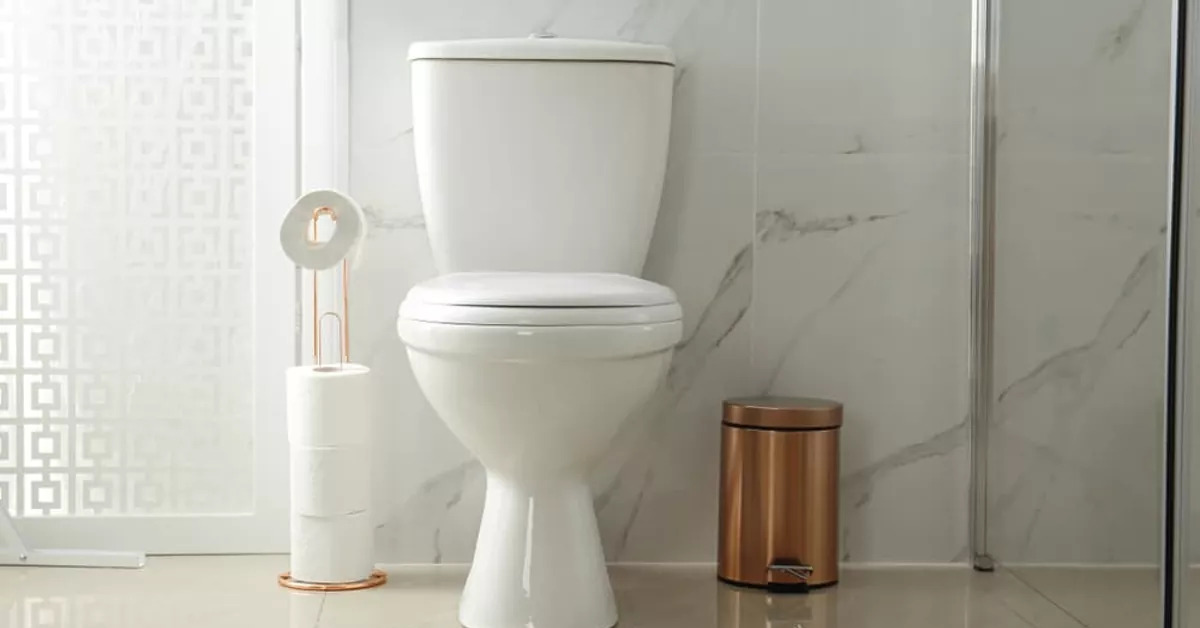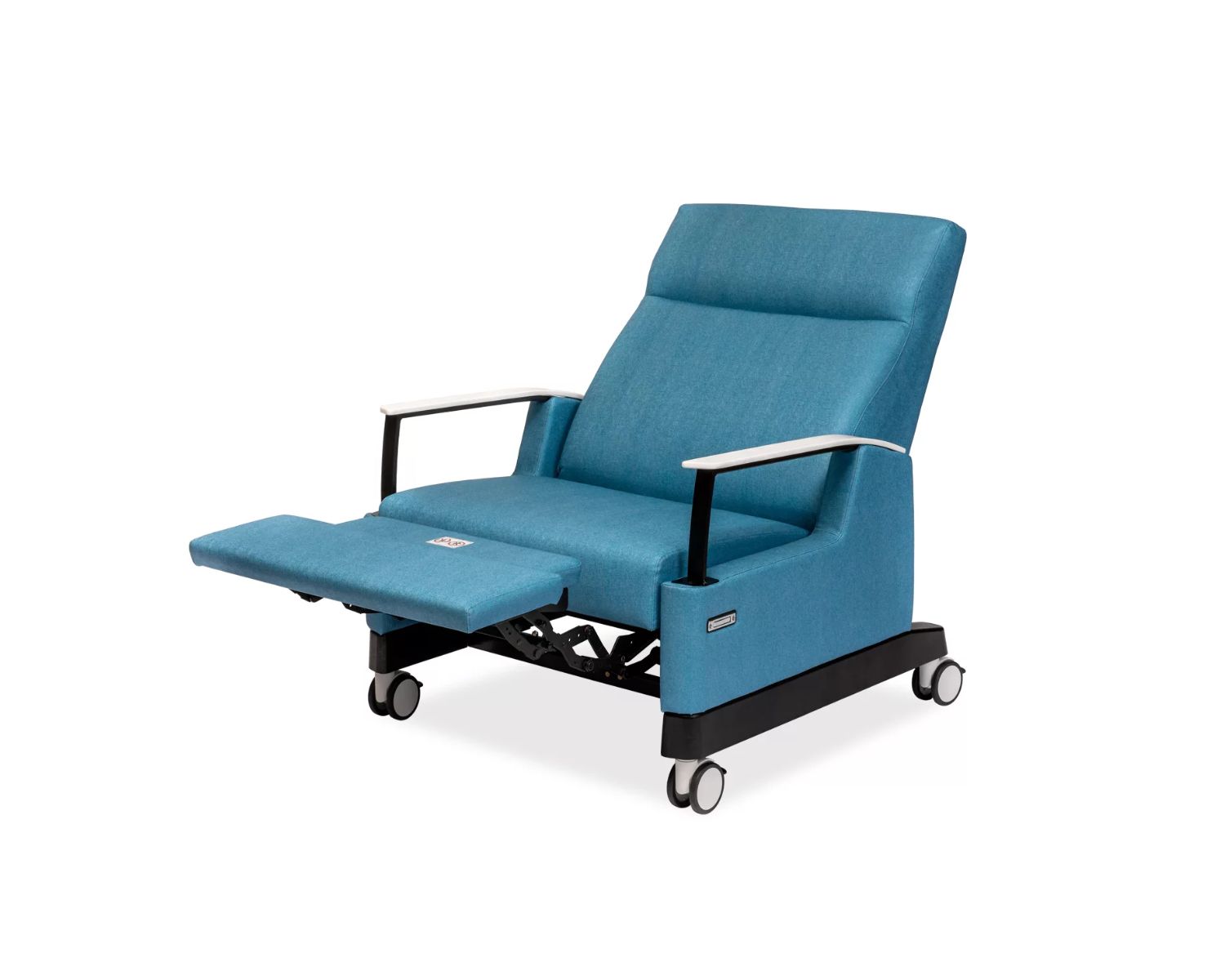Home>Furniture & Design>Bathroom Accessories>How Much Weight Can Toilet Seat Hold


Bathroom Accessories
How Much Weight Can Toilet Seat Hold
Modified: February 18, 2024
Discover the weight capacity of toilet seats and ensure safety with our durable bathroom accessories. Find out how much weight a toilet seat can hold.
(Many of the links in this article redirect to a specific reviewed product. Your purchase of these products through affiliate links helps to generate commission for Storables.com, at no extra cost. Learn more)
Introduction
When it comes to bathroom accessories, the toilet seat is often overlooked in terms of its weight capacity. Many people don't give much thought to how much weight a toilet seat can actually hold. However, understanding this aspect is crucial for ensuring safety and durability in the bathroom. Whether you're a homeowner, a facilities manager, or simply someone in the market for a new toilet seat, knowing the weight limit of a toilet seat is essential.
In this comprehensive guide, we will delve into the factors that determine the weight capacity of toilet seats, the different types of toilet seats available and their respective weight limits, and provide valuable tips for ensuring the safety and longevity of your toilet seat. By the end of this article, you will have a clear understanding of how much weight a toilet seat can hold and how to make informed decisions when choosing and using this essential bathroom fixture. So, let's dive in and explore the fascinating world of toilet seat weight limits!
Key Takeaways:
- Ensure safety and durability by choosing a toilet seat with a weight limit that matches your needs. Regular maintenance and proper usage are key to maximizing the seat’s longevity and safety.
- Different types of toilet seats have varying weight capacities, so choose one that suits your usage requirements. Adhere to weight limits, conduct regular inspections, and educate users for a safe bathroom experience.
Read more: How Much Weight Can Attic Hold
Understanding the Weight Limit of Toilet Seats
The weight limit of a toilet seat refers to the maximum amount of weight it can support without compromising its structural integrity or risking damage. This weight capacity is a crucial consideration, as exceeding the specified limit can lead to potential safety hazards and premature wear and tear.
To understand the weight limit of toilet seats, it's essential to consider the materials used in their construction. Most toilet seats are made from durable materials such as plastic, wood, or composite materials. Each material has its own weight-bearing capacity, which directly influences the overall weight limit of the toilet seat.
Additionally, the design and construction of the toilet seat play a significant role in determining its weight capacity. Features such as reinforced hinges, sturdy mounting hardware, and overall build quality contribute to the seat's ability to withstand weight.
Furthermore, the weight limit of a toilet seat is also influenced by industry standards and regulations. Manufacturers adhere to specific guidelines and testing procedures to ensure that their products meet safety and performance requirements. These standards help establish the maximum weight capacity for toilet seats, providing consumers with essential information for making informed purchasing decisions.
It's important to note that the weight limit specified by manufacturers is based on normal usage and is intended to ensure the longevity and safety of the toilet seat. Exceeding the recommended weight capacity can lead to structural damage, hinge failure, or even complete detachment from the toilet bowl, posing a risk of injury and necessitating costly repairs or replacements.
In summary, understanding the weight limit of toilet seats involves considering the materials, design, construction, industry standards, and intended usage. By being aware of these factors, consumers can make informed choices and take necessary precautions to ensure the safety and durability of their toilet seats.
Factors Affecting the Weight Capacity
The weight capacity of a toilet seat is influenced by several key factors, each playing a crucial role in determining its ability to support weight effectively and safely.
1. Material Composition:
The material used in the construction of a toilet seat significantly impacts its weight capacity. Common materials include plastic, wood, and composite materials. Each material has its own inherent strength and weight-bearing capabilities. For instance, solid wood toilet seats are known for their durability and ability to support substantial weight, while plastic seats are lightweight and may have specific weight limitations. Composite materials, such as thermoset or thermoplastic blends, offer a balance of strength and weight, contributing to the overall weight capacity of the seat.
2. Design and Construction:
The design and construction of the toilet seat, including its shape, thickness, and reinforcement, directly influence its weight capacity. Seats with reinforced hinges, robust mounting hardware, and sturdy construction are better equipped to withstand heavier loads. Additionally, the distribution of weight across the seat's surface area, as well as the presence of additional support structures, can enhance its overall weight-bearing capabilities.
Read more: How Much Weight Can A Ladder Hold
3. Industry Standards and Testing:
Manufacturers adhere to industry standards and rigorous testing procedures to determine and specify the weight capacity of their toilet seats. These standards ensure that the seats meet safety and performance requirements, providing consumers with reliable information regarding their weight-bearing limits. Compliance with industry standards is essential for maintaining the structural integrity and safety of the toilet seat under normal usage conditions.
4. Intended Usage and Environment:
The intended usage and environment in which the toilet seat will be installed also impact its weight capacity. Seats in commercial or high-traffic settings may require higher weight limits to accommodate a broader range of users. Additionally, environmental factors such as humidity and temperature variations can affect the material properties and, consequently, the weight capacity of the seat over time.
5. Maintenance and Care:
Proper maintenance and care of the toilet seat can also influence its weight capacity. Regular cleaning and inspection help prevent deterioration and damage that could compromise the seat's ability to support weight. Neglecting maintenance can lead to weakened materials, loosened fittings, and reduced weight-bearing capabilities over time.
By considering these factors, consumers can make informed decisions when selecting a toilet seat that aligns with their specific needs and usage requirements. Understanding the elements that affect weight capacity enables individuals to prioritize safety and durability, ensuring that the chosen toilet seat can effectively support the intended users while maintaining its structural integrity.
Different Types of Toilet Seats and Their Weight Limits
When it comes to toilet seats, there are several types available, each with its own unique features and weight-bearing capabilities. Understanding the differences between these types can help consumers make informed decisions based on their specific needs and preferences.
-
Plastic Toilet Seats:
Plastic toilet seats are lightweight and commonly found in residential settings. While they are generally durable, their weight limits may vary depending on the quality and thickness of the plastic used. Standard plastic seats typically have weight capacities ranging from 250 to 300 pounds. However, it's essential to check the manufacturer's specifications for the precise weight limit of a particular plastic toilet seat. -
Wooden Toilet Seats:
Wooden toilet seats, often crafted from materials like oak, maple, or bamboo, are known for their sturdiness and aesthetic appeal. These seats can support higher weight limits compared to their plastic counterparts. The weight capacity of wooden toilet seats typically ranges from 300 to 400 pounds, making them suitable for a broader range of users. However, it's important to note that the weight limit may vary based on the type of wood and the seat's construction. -
Composite Material Toilet Seats:
Toilet seats made from composite materials, such as thermoset or thermoplastic blends, offer a balance of strength, durability, and weight-bearing capacity. These seats are designed to withstand substantial weight while providing enhanced resistance to wear and tear. The weight limits of composite material toilet seats often fall within the range of 300 to 400 pounds, making them a versatile choice for various applications. -
Specialty Toilet Seats:
Specialty toilet seats, including those with added features such as extra padding, raised height, or integrated support handles, are designed to accommodate specific user needs. These seats are engineered to support varying weight capacities based on their unique designs and functionalities. Weight limits for specialty toilet seats can range from 300 to 500 pounds, catering to individuals requiring additional support and stability.
It's important to note that the weight limits mentioned for each type of toilet seat are approximate ranges based on common industry standards. However, specific products may have variations in weight capacity, and it's crucial to refer to the manufacturer's guidelines for precise information.
By understanding the weight limits associated with different types of toilet seats, consumers can select the most suitable option based on their preferences, usage requirements, and the anticipated weight loads. Whether for residential, commercial, or specialized applications, choosing a toilet seat with an appropriate weight capacity ensures both safety and long-term durability.
Read more: How Much Weight Can Glass Shelves Hold
Tips for Ensuring Safety and Durability
-
Adhere to Weight Limits: Always adhere to the specified weight limits for your toilet seat. Exceeding the recommended weight capacity can lead to structural damage and compromise safety.
-
Regular Inspection: Routinely inspect the toilet seat for any signs of wear, cracks, or loose fittings. Addressing minor issues promptly can prevent potential hazards and extend the seat's lifespan.
-
Proper Installation: Ensure the toilet seat is correctly installed according to the manufacturer's guidelines. Secure mounting and proper alignment contribute to its stability and weight-bearing capacity.
-
Choose the Right Material: Select a toilet seat material that aligns with your anticipated usage and weight requirements. Consider the weight limits and durability of plastic, wood, or composite material seats based on your specific needs.
-
Avoid Impact and Misuse: Discourage standing or exerting excessive force on the toilet seat, as this can strain the hinges and weaken the seat's structure. Educate household members or users about proper usage to prevent unnecessary stress on the seat.
-
Clean and Maintain Regularly: Regular cleaning and maintenance not only uphold hygiene but also contribute to the longevity of the toilet seat. Use mild cleaners and avoid harsh chemicals that may degrade the material over time.
-
Replace Worn Components: If you notice worn or damaged components such as hinges or mounting hardware, consider replacing them promptly. This proactive approach can prevent potential failures and maintain the seat's weight capacity.
-
Consider User Requirements: For households with diverse users, consider specialty toilet seats designed to accommodate higher weight limits and provide additional support. These options cater to specific user needs while prioritizing safety and comfort.
-
Educate Users: Inform household members or facility users about the weight limits and proper care of the toilet seat. Awareness of weight restrictions and usage guidelines can help prevent accidental damage and ensure the seat's longevity.
-
Consult Manufacturer Guidelines: Refer to the manufacturer's guidelines and recommendations for maintaining the weight capacity and durability of your specific toilet seat model. Following these guidelines can help optimize safety and performance.
By implementing these tips, individuals can prioritize safety, prolong the lifespan of their toilet seats, and ensure that the weight capacity remains within safe limits for all users.
Conclusion
In conclusion, understanding the weight limit of a toilet seat is essential for ensuring safety, durability, and optimal performance in residential, commercial, and specialized settings. The weight capacity of a toilet seat is influenced by various factors, including the material composition, design and construction, industry standards, intended usage, and maintenance practices. By considering these factors, consumers can make informed decisions when selecting a toilet seat that aligns with their specific needs and usage requirements.
Different types of toilet seats, such as plastic, wooden, composite material, and specialty seats, offer varying weight-bearing capabilities, catering to diverse user preferences and anticipated weight loads. It's crucial for individuals to adhere to the specified weight limits, conduct regular inspections, and choose the right material to ensure the longevity and safety of their toilet seats. Proper installation, avoidance of impact and misuse, regular cleaning and maintenance, and proactive component replacement are key practices that contribute to the sustained weight capacity and overall durability of toilet seats.
By prioritizing safety and implementing the recommended tips, consumers can optimize the performance and longevity of their toilet seats while ensuring that the weight capacity remains within safe limits for all users. Additionally, staying informed about industry standards, manufacturer guidelines, and user education further enhances the responsible usage and maintenance of toilet seats, promoting a safe and comfortable bathroom experience for everyone.
Ultimately, the weight limit of a toilet seat serves as a critical consideration in maintaining a functional and secure bathroom environment. By integrating the knowledge of weight capacity with proactive care and informed decision-making, individuals can confidently select, utilize, and maintain toilet seats that effectively support their intended users while upholding safety and durability standards.
Frequently Asked Questions about How Much Weight Can Toilet Seat Hold
Was this page helpful?
At Storables.com, we guarantee accurate and reliable information. Our content, validated by Expert Board Contributors, is crafted following stringent Editorial Policies. We're committed to providing you with well-researched, expert-backed insights for all your informational needs.














0 thoughts on “How Much Weight Can Toilet Seat Hold”